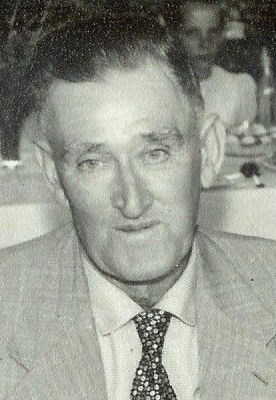A century on from the end of World War I we acknowledge their service …
Lest we forget.
Gunner Stephen Raymond Maher
Born: 1894 near Horsham. Died: 24 December 1976 Perth.
Enlisted: 27 August 1914 aged 20 years
Served: Egypt, Gallipoli and Western Front.
Listed on the Pakenham War Memorial as “R. S. Maher” and known to his family as “Ray”, Stephen Raymond Maher was one of nine children born to Stephen Maher and his wife Bridget Catherine Ryan. The family moved around Victoria quite a bit as their father was posted to different police stations. In 1913, Constable Maher was transferred from Ferntree Gully to Pakenham, where he was stationed as the “mounted police constable”, undertaking his duties around the district on horseback.
In 1914, Constable Maher lost his troop horse because Pakenham was to become a “bicycle station”. This change was derided by the locals as “impracticable” given the nature of the duties, the local terrain and the condition of the roads. The decision was eventually reversed and Constable Maher got his horse back.
Ray was a labourer when he enlisted on 27 August 1914, just weeks after war was declared. Perhaps because of a clerical error, Ray’s war service was recorded under the name “Roy Maher”. He was the first of three Maher boys to see service overseas during WWI and sent to Gallipoli with the 3rd Brigade, Australian Field Artillery, but was returned to Egypt with the horses which were not landed because the rough and hilly terrain was not suitable for them.
In March 1916, Ray proceeded to France, where he subsequently fought on the Western Front. Ray served with his unit in France until late June, after which he was in and out of hospital (including in England) for various conditions. He returned to his unit in December 1917. Back home, the fact that Ray was one of the original Anzacs was used to encourage other men from the Berwick Shire to enlist. The campaign very much appealed to mateship and the Australian sense of fairness, noting that soldiers like Ray had been away for 1000 days and needed to be brought home for a rest, which could only happen if recruitment quotas were met. Young men were therefore asked to step forward to enlist in the place of their “pals” at the Front. It is not known if anyone did so to replace Ray.
By October 1918, he was on his way home (via Taranto in Italy) for the special “1914 Leave” that the Australian Government fought hard with the British authorities to arrange for the original Anzacs from 1914. The news that Ray was on his way home was greeted with great excitement in Pakenham. However, Ray fell sick with enteric fever on the voyage home and was disembarked and hospitalised at Fremantle. This news did not reach Ray’s family in time and a number of his relatives had gone up to Melbourne to greet him at the wharf. There was inevitably disappointment and anxiety when it was realised that Ray was not aboard the ship. Some of Ray’s comrades told his family that he had been taken off the ship to hospital in Western Australia. This was later confirmed later by letters from the Army, Red Cross and YMCA, which confirmed Ray was convalescing.
By 1921 Ray was still in WA working as a labourer in Carnarvon. In 1924, he asked that the Army issue his remaining war medals to his sister Mary Monica Maher. The following year, Ray married Irene Lee. The couple headed back to Pakenham for a period, before returning to Western Australia, where they settled in the wheat belt.
This is an extract from Patrick Ferry’s book A Century After The Guns Fell Silent – Remembering the Pakenham District’s WWI Diggers 1914-18.
For more details on this and other profiles in the book, head to the website www.pakenhamww1.com







